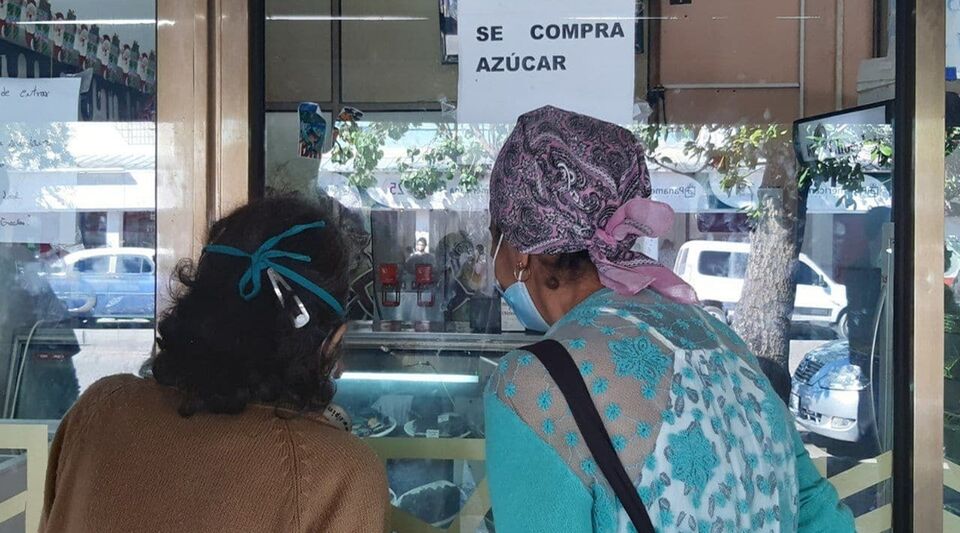Rice and sugar seem to have launched a competition in Cuba to see which price rises more in the informal market. While the cereal already exceeds 200 pesos per pound in several areas of the Island, the former national emblem is close on its heels and is also around that number and in some provinces it even exceeds it.
“I’m selling 17 pounds of brown sugar for 180 pesos if you buy them all from me, if you only want a part then it’s 190,” reads an ad posted in a Facebook buy-sell group that in a few hours accumulated dozens of comments. “It’s in Centro Habana and I don’t have a delivery service,” declared the informal merchant who, shortly after, updated the information with a brief message: “Sold and I don’t have any more.”
In the previous harvest, the production of the Cuban mills barely reached 480,000 tons of sugar out of the 911,000 that were forecast, a breach that caused a deficit of 60,000 tons for national consumption and seriously affected exports.
“During the Special Period, at least sugar was not lacking,” the woman commented. “Many people survived those years thanks to sugar water”
Given the disastrous numbers, in the warehouses of the rationed market the product has been further restricted in recent months. “They only sold me a pound and they say that this month I don’t have any more,” lamented this Friday a retiree who buys her standard basic basket in a store on Conill street, in the municipality of Plaza de la Revolución.
“During the Special Period [la crisis de los años 90] at least there was no shortage of sugar,” the woman commented. “Many people survived those years thanks to sugar water, so now the situation is worse because we don’t even have that.” Comparisons between the current economic difficulties the Island is going through and those suffered after the collapse of the Soviet Union are frequent.
“In my house we always had a bowl with sugar on the table so that everyone who came to visit us could eat a few spoonfuls to be able to continue on our way,” recalls Evaristo, a resident of the El Cerro neighborhood who this week bought “ten pounds of sugar at 170 pesos” and considers himself “lucky” because “you can’t find it at that price anymore.
Inside the houses consumption is cut back, coffee is drunk more bitter and fruit desserts in syrup are scarce. “Now it doesn’t even occur to me to offer anything sweet to the visitor,” says Evaristo
Recently, the Ministry of Domestic Trade acknowledged that the delivery of sugar from the rationed market will depend on the availability in the country. The first results of the 2022-2023 harvest suggest that production will again be on the ground and far from the goal of receiving 455,198 tons.
There are also those who see in the deficit of the product a possibility of doing business by importing substitutes. “I am selling 500 grams of aspartame, a sweetener that sweetens more than sugar. Ideal for businesses that prepare sweets. The bag costs 60 dollars, I only accept that currency,” reads a very popular classified portal.
Others, given the price similarities between some foods, propose a barter operation. “I change five pounds of rice for three of white sugar,” proposes someone in another Facebook group where the exchange of goods has gained space. The galloping loss of value of the Cuban peso makes many prefer to offer their merchandise in exchange for other food than to obtain the national currency.
Inside the houses consumption is cut back, coffee is drunk more bitter and fruit desserts in syrup are scarce. “Now it doesn’t even occur to me to offer anything sweet to the visitor, the little sugar we have left is for the family’s consumption. There is not one more spoonful for anyone,” says Evaristo, who was born in 1959, when the Cuban sugar mills achieved more than 5 million tons of sugar.
________________________
Collaborate with our work:
The team of 14ymedio He is committed to doing serious journalism that reflects the reality of deep Cuba. Thank you for accompanying us on this long road. We invite you to continue supporting us, but this time becoming a member of our newspaper. Together we can continue transforming journalism in Cuba.







